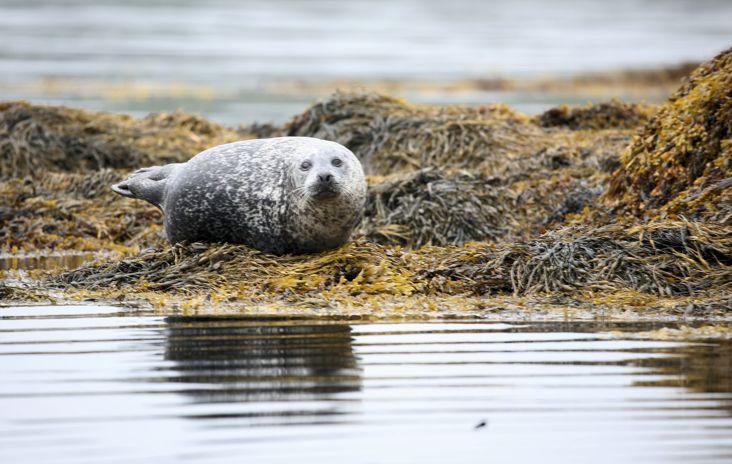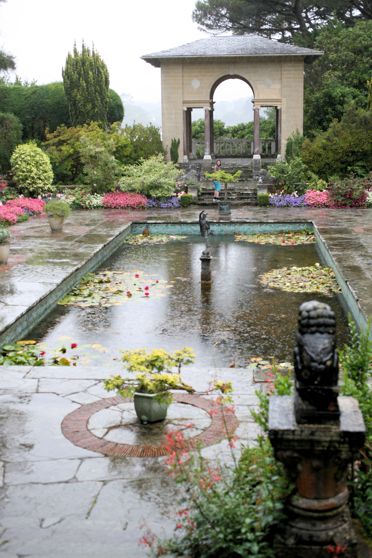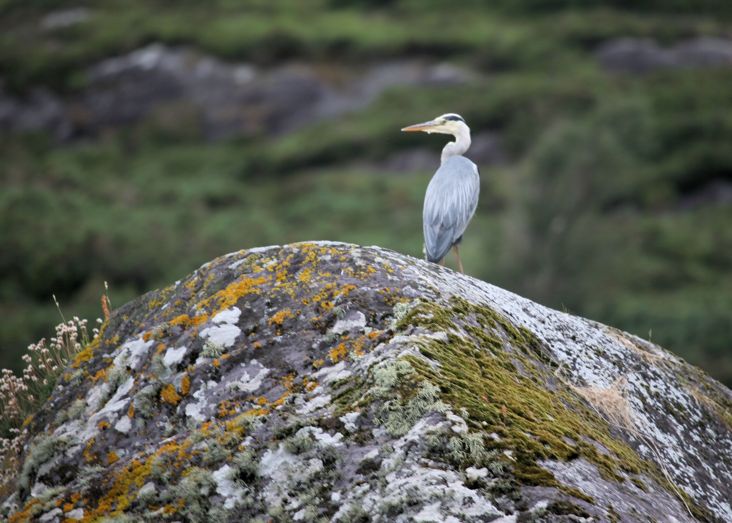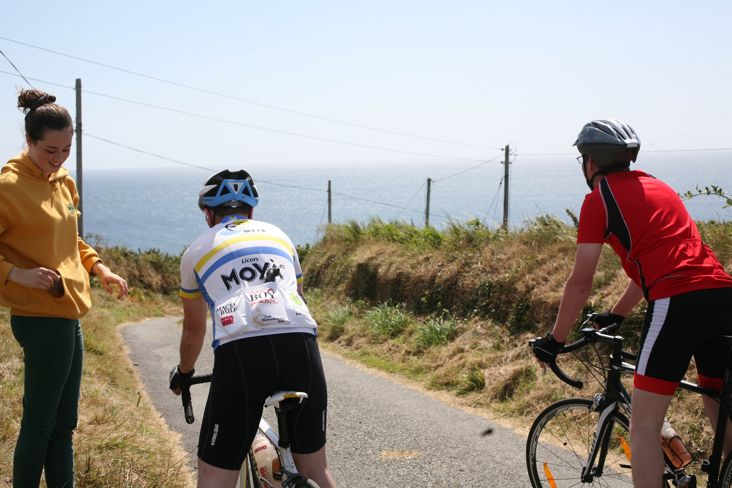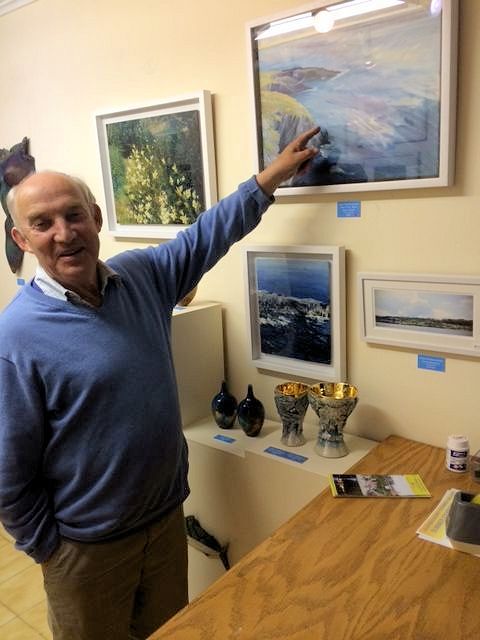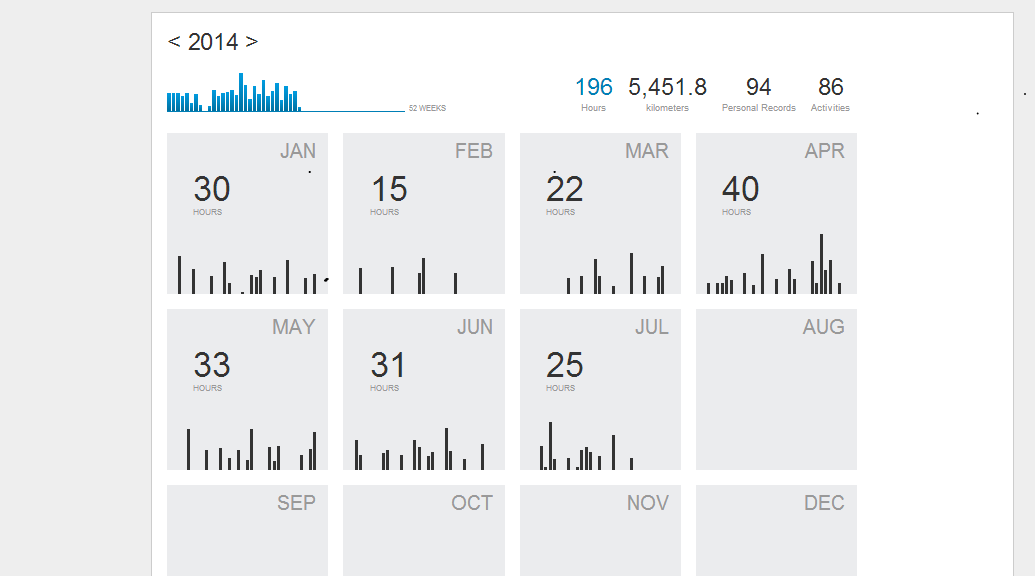
Our day began by wending our way along the extreme south western corner of the Iveragh Peninsula to Derrynane National Historic Park – best known as the ancestral home of Daniel O’Connell, the Irish Liberator. But this is a real gem of a site; huge diversity crammed into the 120 ha site owned and managed by the Office of Public Works. The northern slopes of the site are clothed in semi-natural woodland of different types, then a dune system and species-rich grassland separate the woodland from the sheltered sandy bay. Throw in a formal garden supporting a myriad of exotic plants, and you have it all. It is probably best known by botanists as the area where some really rare and localises species like the Kerry Lilly and the Blue-eyed Grass can be found. But crammed into this site is an amazing diversity of wildlife; in May of this year as part of Ireland’s BioBlitz surveyors found and identified almost 1,000 different species over a 24-hour period.

But what I find special about the site is that it is an important cultural and natural site, and although Derrynane House is the focus of the visitor attraction, the natural heritage component is valued equally. We met with Chris O’Neill who recently took over the management of the property and he has set about commissioning surveys of the biodiversity of the site to better understand its significance, for, as he explains, maintaining the ecological quality of the site is fundamental to maintaining its cultural significance – they are one and the same thing. A really refreshing attitude. He is also acutely aware that management of a state-owned property like this needs to be done with involvement of the local community and to make sure that the property is seen and used as an asset by them. And as if to emphasise this point, while there we met walkers, swimmer, joggers and a pony-trekking group, all using and enjoying the amenity.
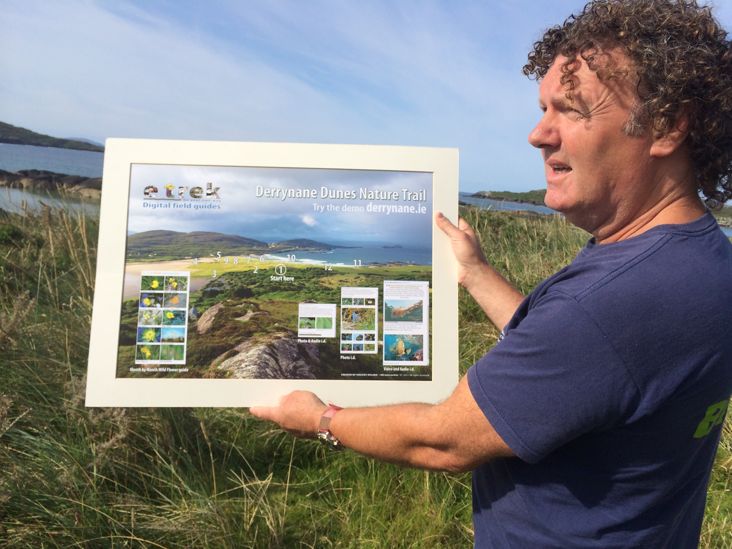
A visit to Caherdaniel would not have been complete without calling in to see the artist, naturalist, film-maker, and publisher Vincent Hyland. Vincent is a Dub who has come to live in the area, and is a real advocate of our natural environment and communicating its value to others. I first came across Vinny when he produced the wonderful Wild Ireland magazine, but he has since expanded by putting his enormous talents to work in developing a super website www.vincenthylandartist.com. He is acutely aware of the value of the marine environment in particular, and is doing very exciting work on communicating this to others. Using his publishing and artistic skills, he is developing ebooks and apps to communicate his knowledge of the marine to locals and visitors alike. The quality of these products are really impressive. Footage that he showed us of a feeding frenzy of birds and fish on a shoal of krill in Kenmare Bay, for example, was astonishing, but not satisfied with just filming the aerial action, he deployed hydrophones to capture the bullet-like entry of the Gannets into the water, to produce a hugely atmospheric film. It felt as if I was in the water with the krill. As talented and interesting as Vinny is, he tells me only about 50% of his income is derived from his natural environment work, so he has to turn his hand to other things too.

At Waterville, stopped off at Sea Synergy, a new marine information centre opened by local woman and marine bologist Lucy Hunt. Lucy, like Vinny, is trying to make a living from their deep knowledge and love of the marine environment, and the lovely shop and information centre she has developed provides an intimate experience unlike any of the other more commercial operations in the area. She also does a great deal of educational work throughout the year. And while there are boat trips to the Skelligs, she thinks that more private operators are needed in Waterville to tap into the ecotourism market.

The road out of Ballinskelligs, a 2.5km climb to Coomanaspic was a really brutal climb, kicking up to 25% in places, so very pleased to have the long descent to Valentia Island after that. Passing Rossbeigh, the huge amount of damage done in the winter storms was evident as much of the beach and dune system has been washed away. If time allowed, I had planned to visit Cromane, one of Lonely Planet’s top 50 ‘secret’ travel locations. But the lure of a pint and meal meant that Cromane will remain, for me at least, a secret place.






